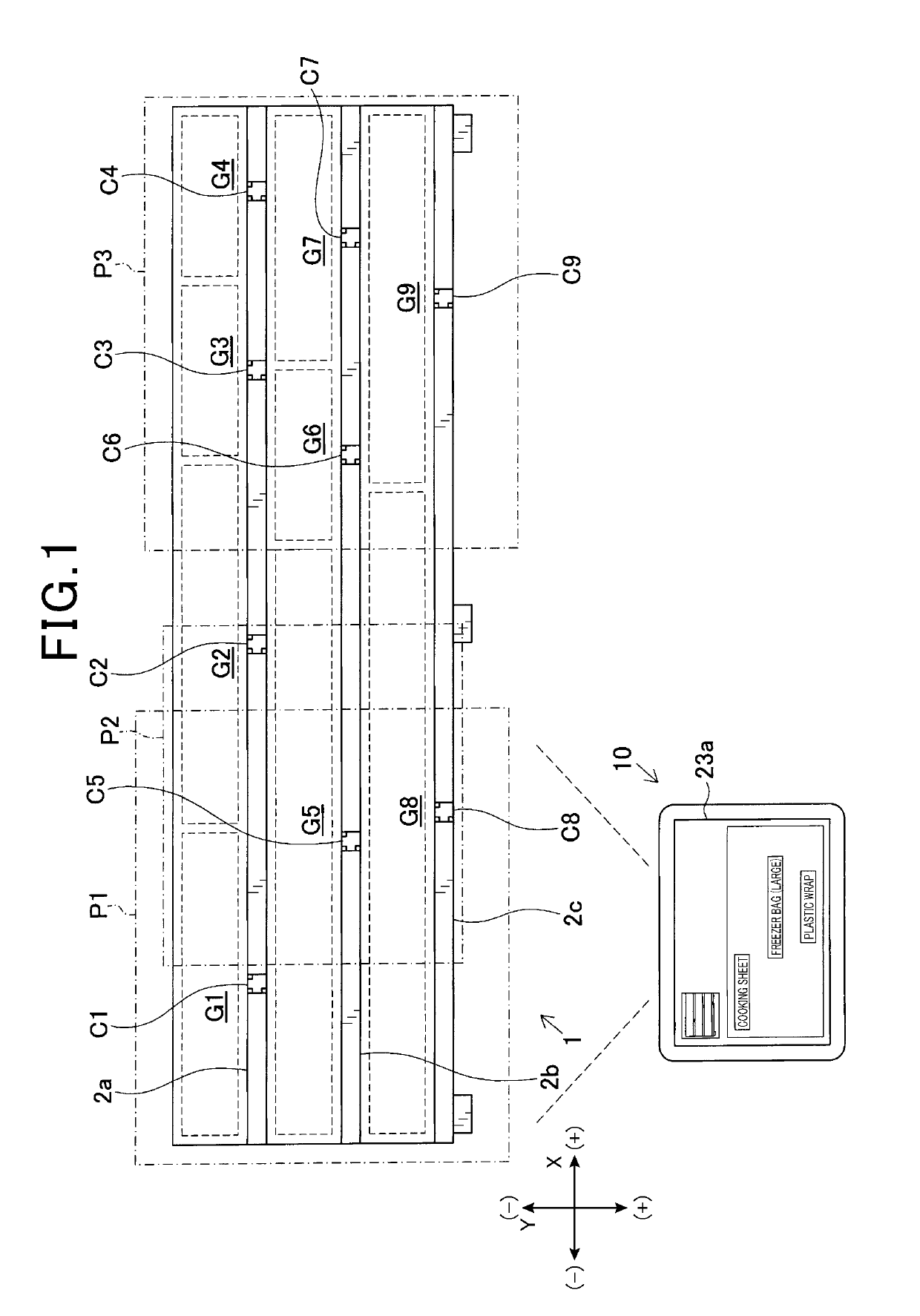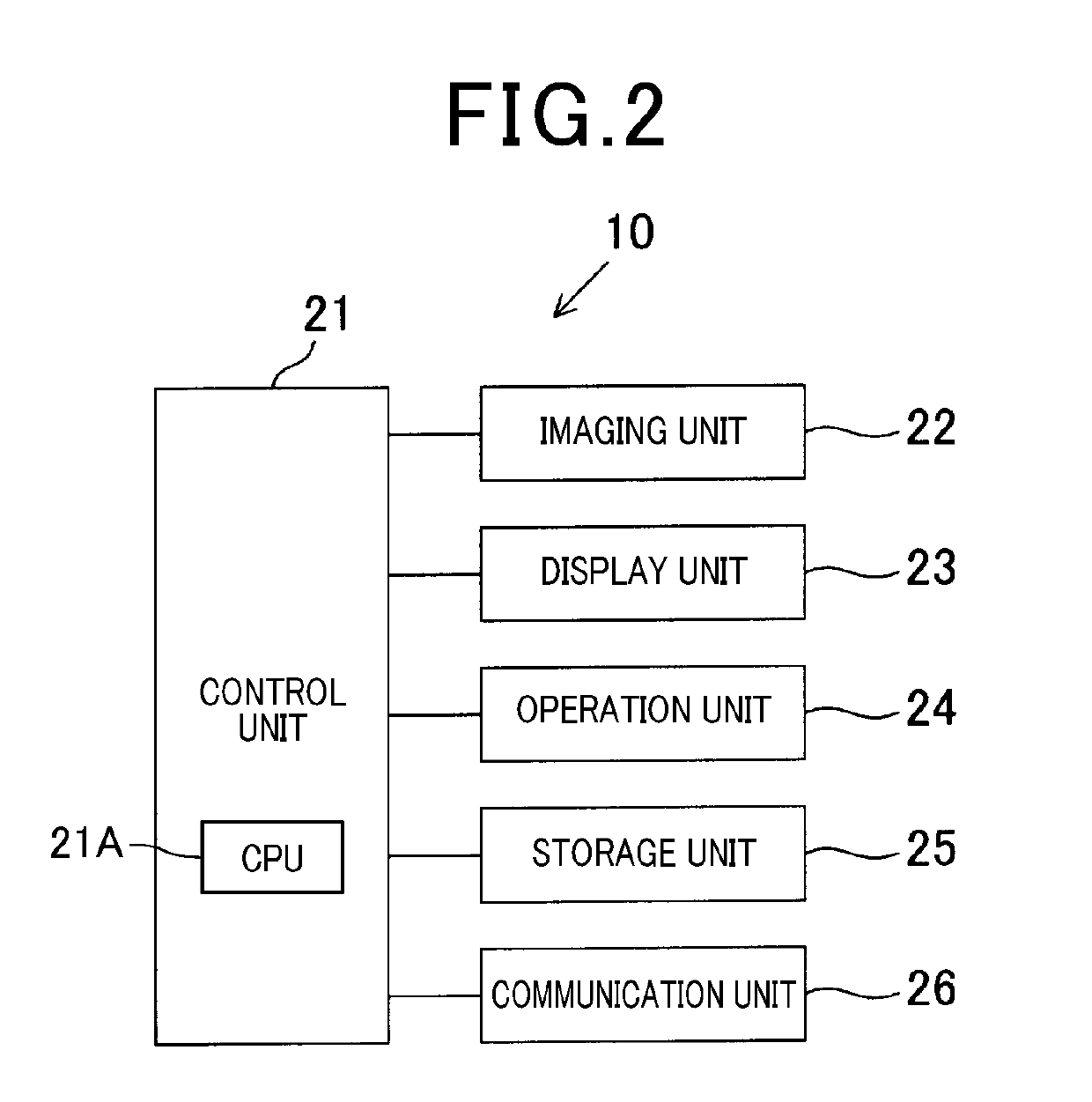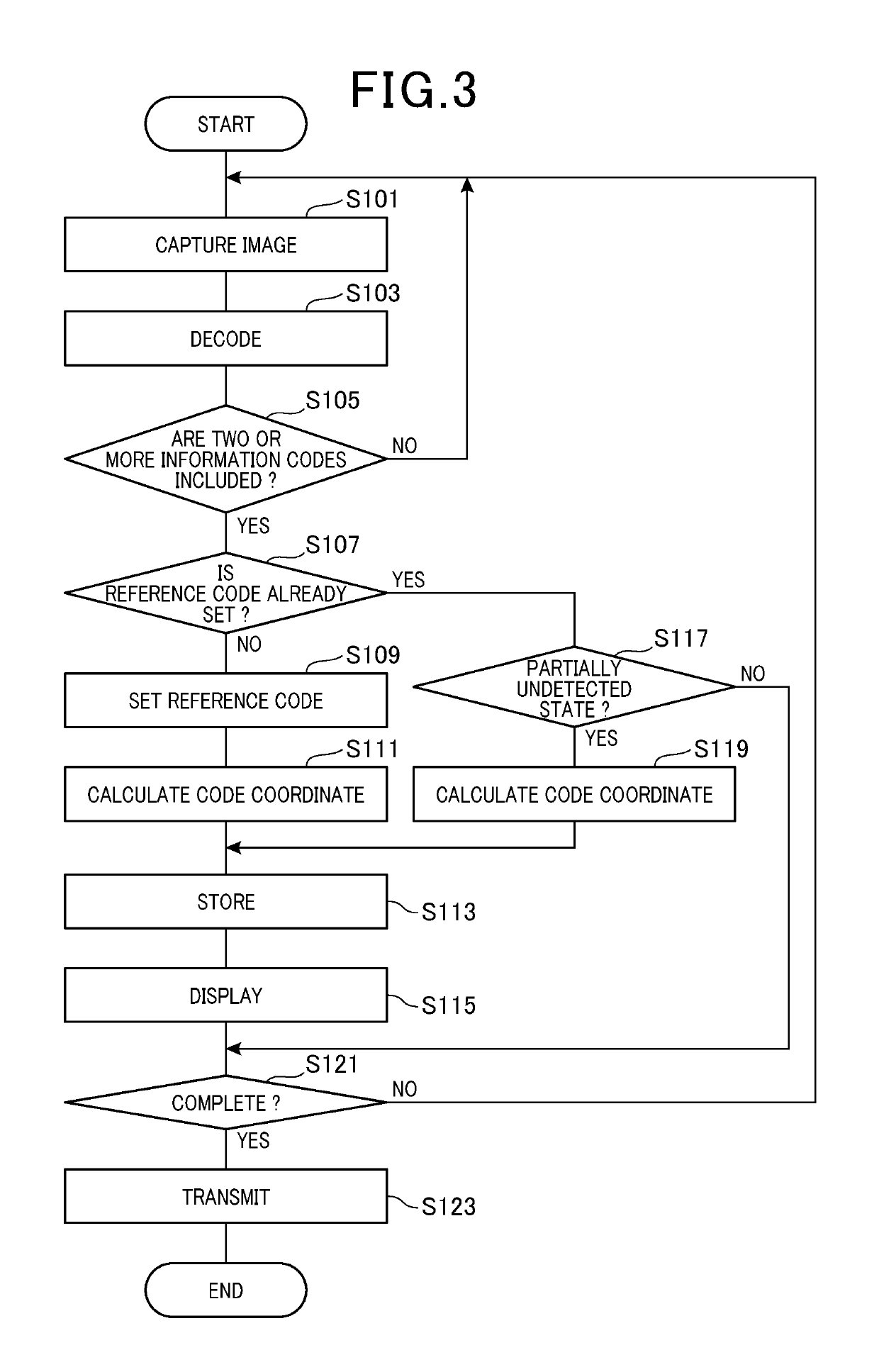Device for detecting positional relationship among objects
a technology of positional relationship and device, applied in the field of device for positional relationship among objects, can solve the problems of narrow space for positioning product identification information, difficult to recognize positional relationship among products, and inability to identify the position of product identification information between a set of positional identification information, etc., to achieve easy recognition, improve work efficiency, and easy to check
- Summary
- Abstract
- Description
- Claims
- Application Information
AI Technical Summary
Benefits of technology
Problems solved by technology
Method used
Image
Examples
first embodiment
[0053]With reference to the drawings, a first embodiment in which a positional relationship detection device according to the present invention is applied to a mobile terminal will be described. The positional relationship detection device is provided as a device for detecting positional relationships among objects being detected.
[0054]A mobile terminal 10 shown in FIG. 1 is provided as a positional relationship detection device for detecting positional relationship among a plurality of items (i.e., objects being detected) displayed on a display shelf 1 by using information codes. In this embodiment, positional relationship among the products displayed on the display shelf 1 shown in FIG. 1 is a detection target. The display shelf 1, which is horizontally (that is, the width direction X later described) elongated along an aisle, is vertically partitioned by three shelf boards 2a to 2c.
[0055]As shown in FIG. 1, the display shelf 1 can be given the width direction extending in the ho...
second embodiment
[0092]Next, with reference to the drawings, a mobile terminal according to a second embodiment will be described. The second embodiment differs from the first embodiment mainly in that two information codes indicative of both ends in the longitudinal direction (i.e, the width direction X) of the display shelf 1 are additionally provided. Therefore, components which are substantially the same as those of the first embodiment are denoted by the same reference signs, and the description thereof will be omitted.
[0093]In the present embodiment, as illustrated in FIG. 9, a first end code Ca is provided on the shelf board 2a at a position on a first end in the longitudinal direction (i.e, the width direction X) of the display shelf 1 as an information code in which first end information indicative of a first end in the longitudinal direction is recorded. Further, a second end code Cb is provided on the shelf board 2c at a position on a second end in the longitudinal direction of the displa...
third embodiment
[0099]Next, with reference to the drawings, a mobile terminal according to a third embodiment will be described. The third embodiment differs from the second embodiment mainly in that the actual distance or the like between the respective information codes is calculated while the size (actual dimensions) of the respective information codes provided on the display shelf is not obtained. Therefore, components which are substantially the same as those of the second embodiment are denoted by the same reference signs, and the description thereof will be omitted.
[0100]In the present embodiment, even in the case where the sizes of the respective information codes provided on the display shelf are not directly obtained, the code image size of the reference code described above in the captured image (an area occupied by the reference code in the captured image) can be used to detect the size ratio of the other information codes relative to the reference code and detect the relative positions...
PUM
 Login to View More
Login to View More Abstract
Description
Claims
Application Information
 Login to View More
Login to View More - R&D
- Intellectual Property
- Life Sciences
- Materials
- Tech Scout
- Unparalleled Data Quality
- Higher Quality Content
- 60% Fewer Hallucinations
Browse by: Latest US Patents, China's latest patents, Technical Efficacy Thesaurus, Application Domain, Technology Topic, Popular Technical Reports.
© 2025 PatSnap. All rights reserved.Legal|Privacy policy|Modern Slavery Act Transparency Statement|Sitemap|About US| Contact US: help@patsnap.com



